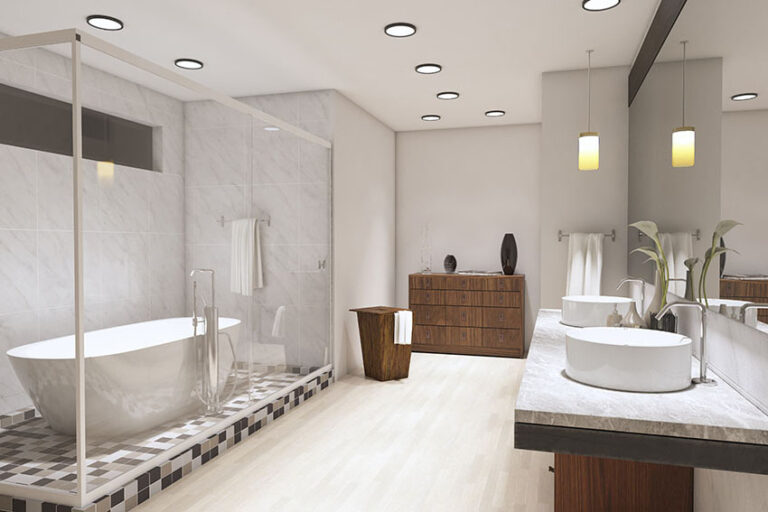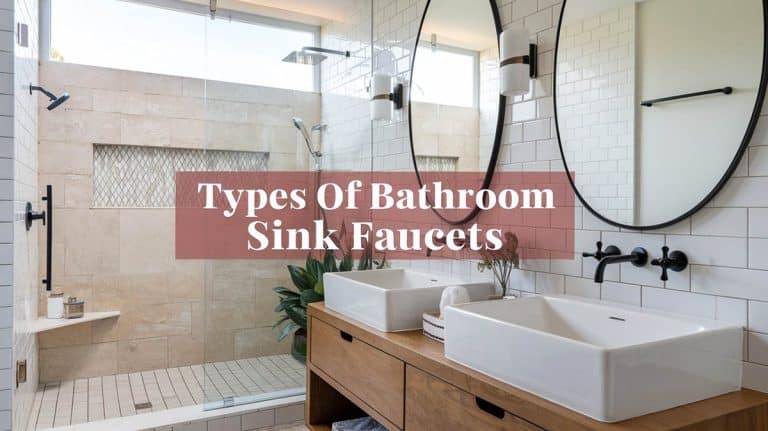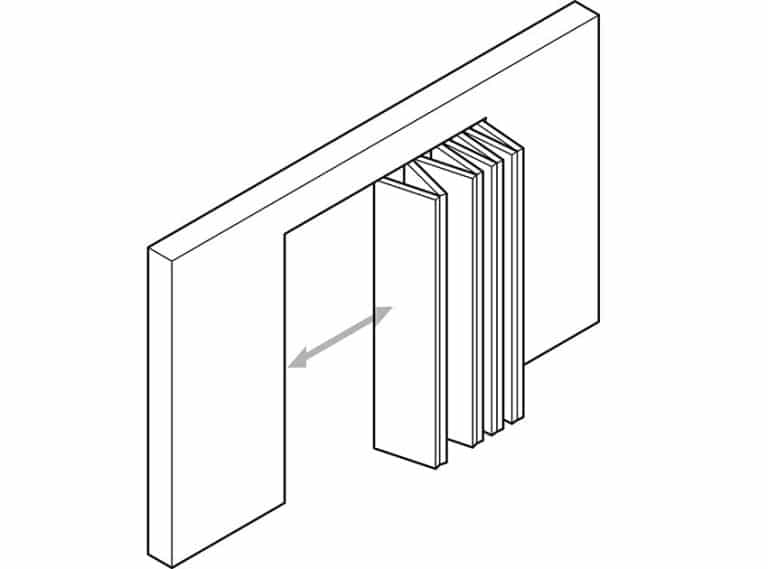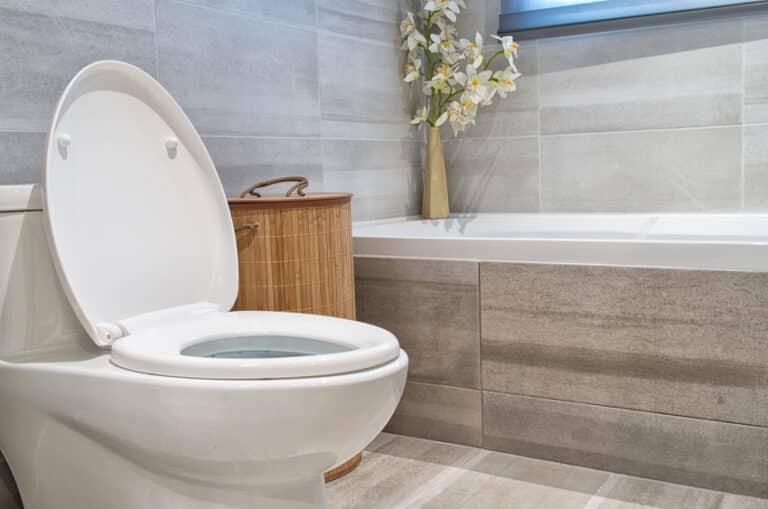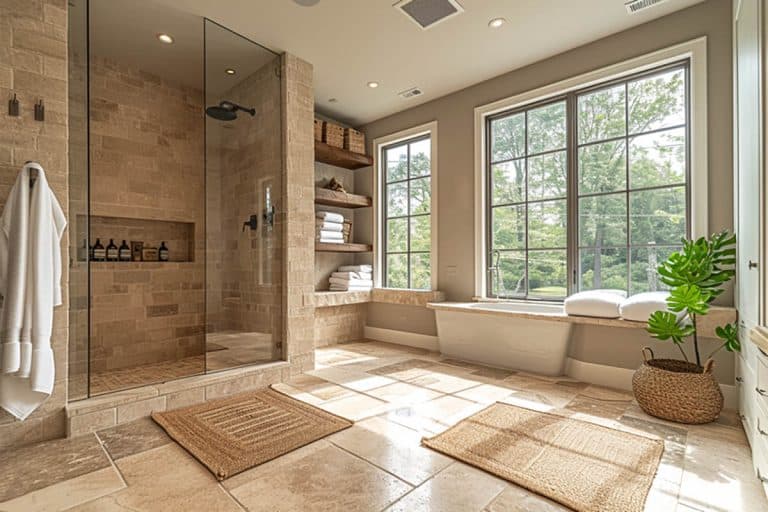Floating Bathroom Countertops
Below is our guide to floating bathroom countertops with ideas on how to support & install this bathroom vanity style, and the best types of materials to use for floating countertop designs.
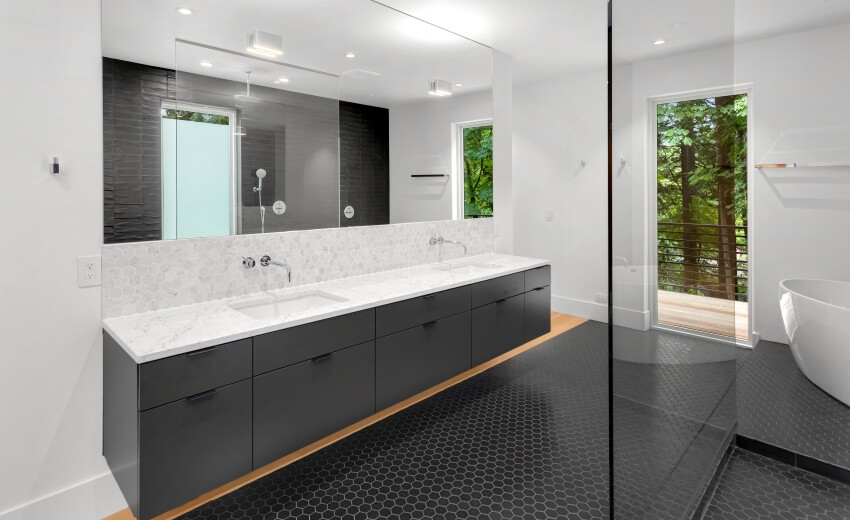
If you are also curious about installing one too, lets look at some factors to consider if a floating bathroom countertop is a good option for your space.
Can You Have A Floating Countertop?
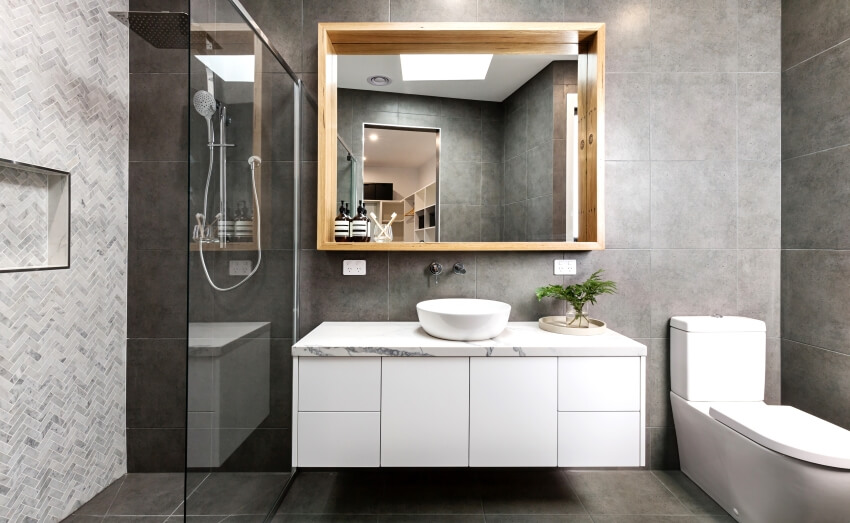
Budget – Whether you are renovating your entire bathroom or just installing a countertop to add a bit of an accent to the area, you need to have a budget for it.
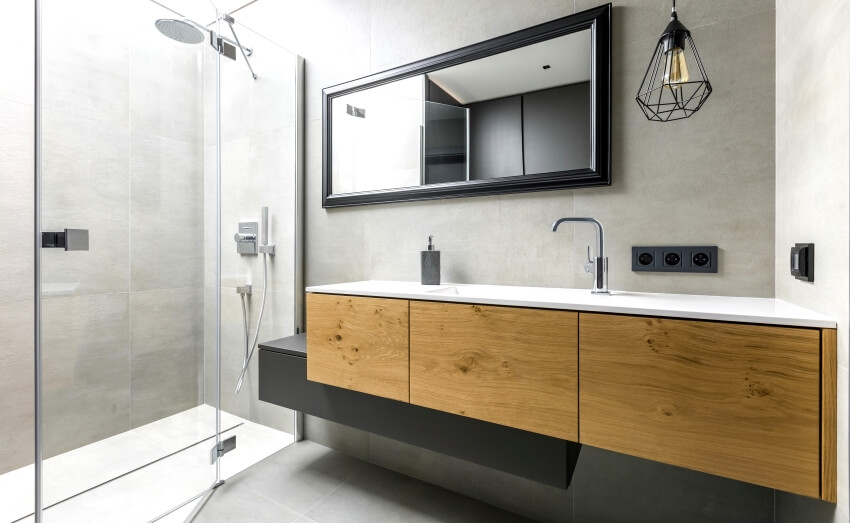
They can easily attach to walls so they are convenient to have. It can even be a folding floating countertop, saving you space for your bathroom when it’s not in use.
Style – A floating countertop needs to match the style you have going in your bathroom. It’s not a good idea to just add in your bathroom despite giving off a completely different feel.
Floating Bathroom Countertop Ideas
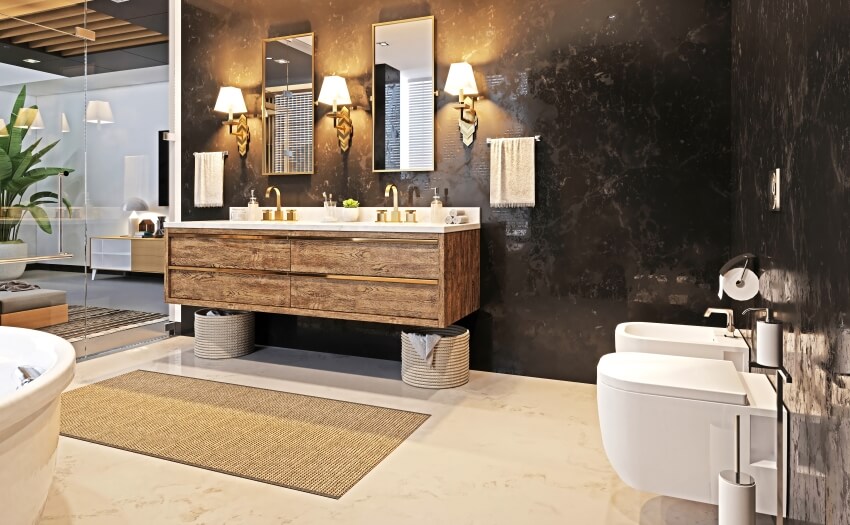
Butcher Block Counter
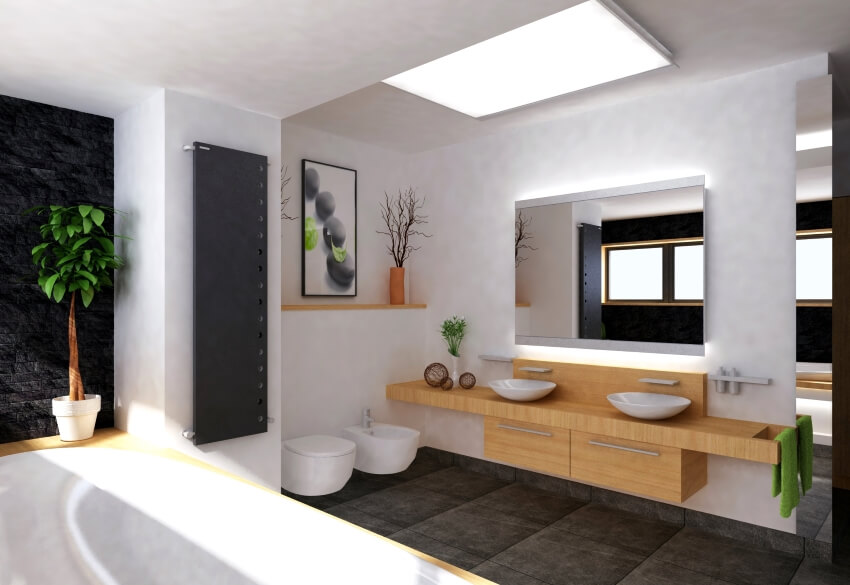
Affordability
A floating butcher block countertop is one of the most affordable options you can consider. On average, you can get a butcher block countertop for $20 to $60 per square foot, which is more affordable than stainless steel, glass, concrete, and marble which can cost you up to $75 or even $150 per square foot.
Wide Choice of Hardwood & Grain
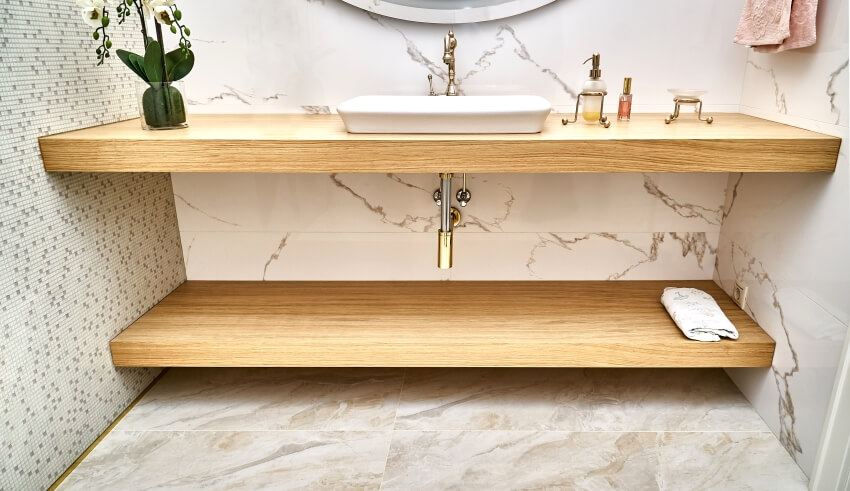
Different Available Styles
With your choice in the kind of wood comes the style and design it can offer. You can choose cherry wood for a dramatic effect on your floating countertop. If you have a modern sustainable home, a blonde bamboo countertop may be the best option for you.
Tip: You can use water-resistant mineral oil to coat the surface of the butcher block to help protect it from moisture.
Granite Countertop
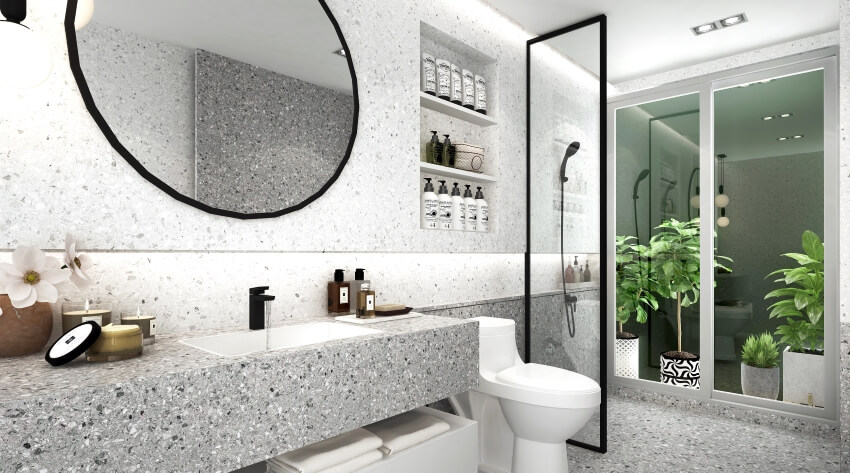
Proper support is absolutely necessary since it can get dangerous if it, unfortunately, falls to the ground, especially if there are people around.
A granite countertop is a heavy countertop and one way to ensure its support is to add an underlayment like plywood. While it can complicate the installation, some believe it to be necessary. A plywood underlayment can prevent cracks on a thin piece of granite and even prolong its life.
Cultured Marble Countertop
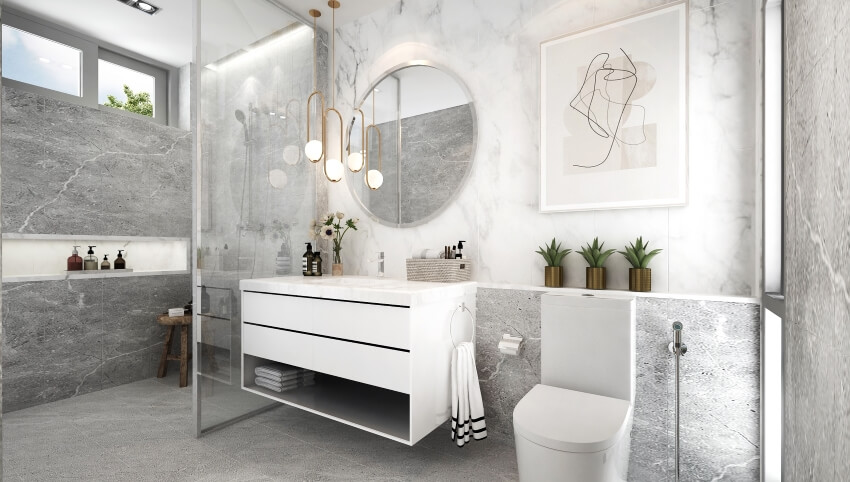
Quartz Countertop
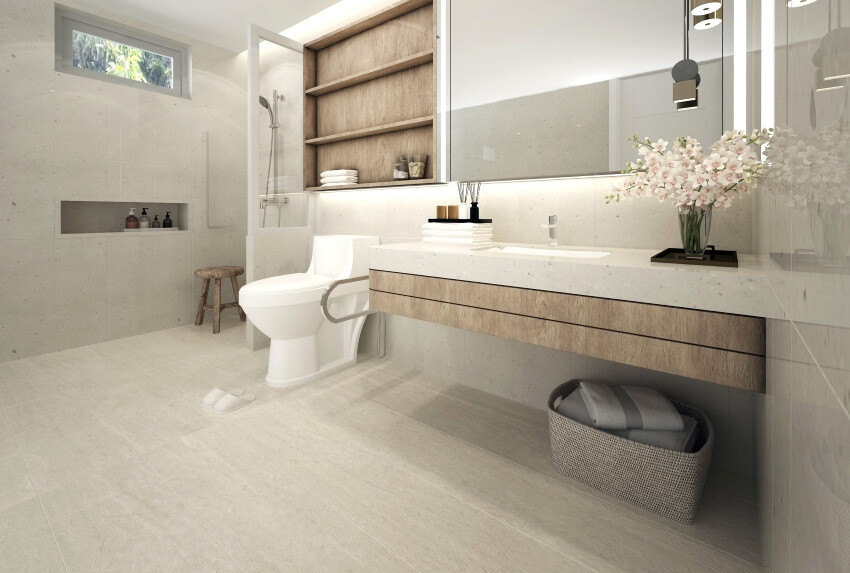
Since quartz is a premium product, adding them to a bathroom can help homeowners recover much of their investment in resale value.
How To Support A Floating Countertop
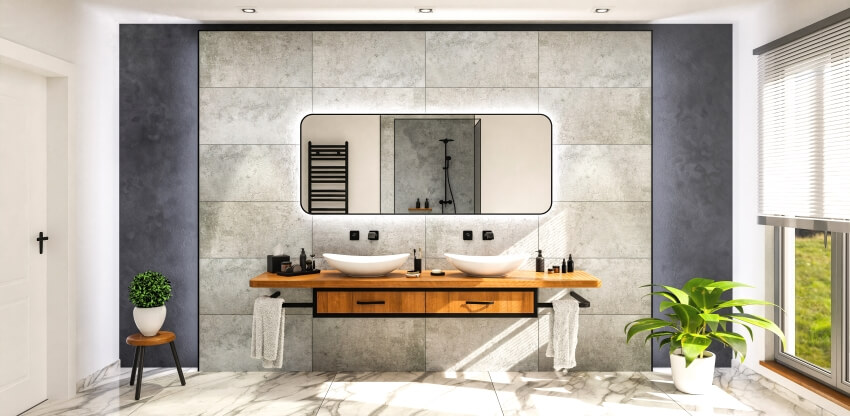
Depending on how heavy it is, it can damage the surrounding area and any person near it when it falls. This is how important properly installing a floating countertop is.
A floating countertop needs solid but creative support since “floating” is just for appearances. Floating countertops can appear to float because they are mounted on a flat vertical surface.
This vertical surface can be on one of your bathroom vanities or a free empty wall, whatever location can accommodate the countertop.
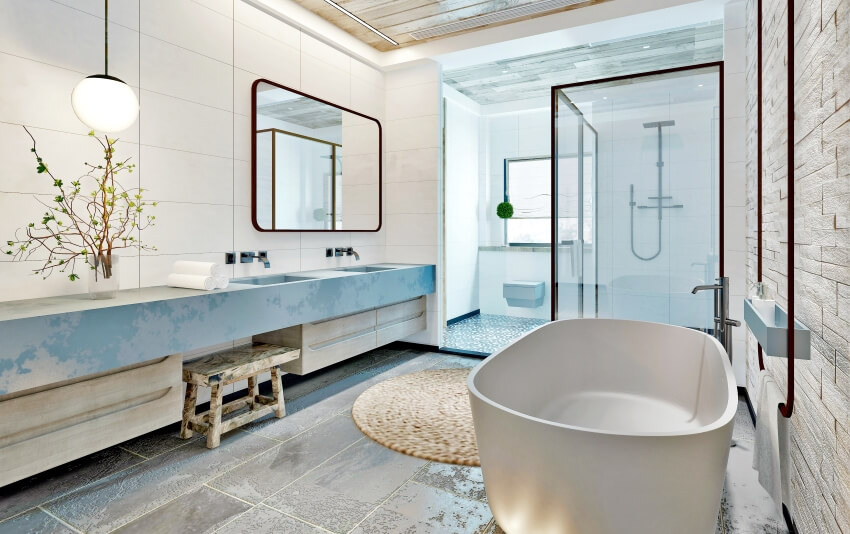
A wooden countertop will have countersunk holes and screws while a stone countertop will need more support and might require more than both adhesive and brackets.
When installing your floating countertops, here are easy steps to follow:
1. Divide your countertops in sections and mark them with equal spaces from each other.
2. Move the brackets closer or in the opposite direction whenever necessary and if the spacing is not right (The spacing will help you install the countertop evenly on the wall. If not, your countertop will tilt or even slide)
3. Find the nearest stud with a stud detector so that the bracket will be secure when mounted.
4. Once you have the right spacing, secure the brackets to the wall.
5. When the brackets have been attached to the wall, attach the other end of the brackets to the vanity countertop.
6. Brackets can be attached to the countertop’s underside using silicone caulking or construction adhesive and make sure that the brackets are secure.

1. Get precise measurements of your countertops.
2. Ensure that the bathroom sink you choose can fit. This includes measuring the clearance for bathroom faucets and pipes to ensure there is enough room.
Make sure that after installation, your countertop is secure enough and won’t slide around (whether you use a special adhesive or silicone caulking).
3. Use a level bar to make sure that your countertop is properly aligned and leveled before you secure it on the wall or cabinet.
Floating Countertop Support Brackets

Your choice on this depends on the size of the countertops you are installing. You can use more than two brackets, whatever your preference may be. Just make sure that they’re solidly attached to the countertop and the wall. Read more about standard bathroom vanity sizes at this guide.
Visit our guide to the bathroom remodel software for programs that can help with designing your space.

